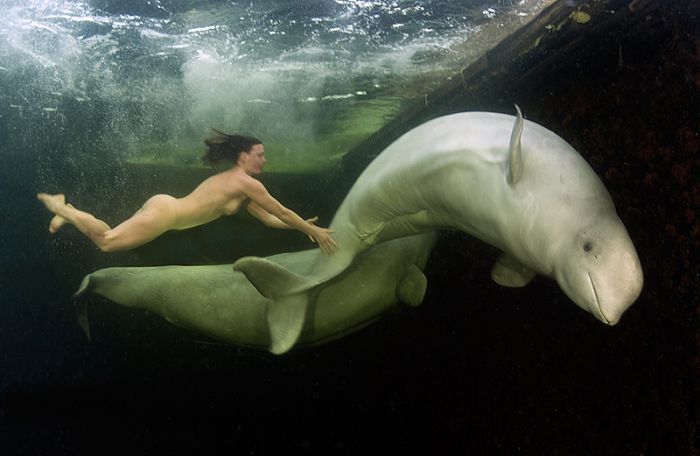|
|
Underwater World With Natalia Avseenko, The White Sea, Russia
|
The climate varies between polar and moderate continental with frequent fogs and clouds. Winds are predominantly southwestern in winter with speeds of 4–8 m/s. They bring cold air from the south, establishing the temperature of about –15 °C (February) over most of the sea. The northern part is warmer at about –9 °C, sometimes reaching –6 °C, due to the warm air masses from the Atlantic. Arctic anticyclones, however, change winds to the northeastern ones, bringing much colder weather with temperatures of about –25 °C. Summers are cold, cloudy and relatively humid, with northeastern winds and frequent rains. Average July temperatures are 8–10 °C. Occasional southeastern winds bring warm air from Europe, raising the temperature to 17–19 °C and sometimes even to 30 °C. Annual precipitations increase from 282 mm in the north 529 in the south.
In winter, from October–November till May–June, the sea freezes, with the average January water temperatures of –1.9 °C in the north, between –1.3 and –1.7 °С in the centre, and between –0.5 and –0.7 °С in the bays. These variations are due to the distribution of water salinity across the sea, which increases from 24–26‰ in the centre to 30.5‰ in the gorlo, reaching 34.0–34.5‰ toward the Barents Sea. The freezing period varies from year to year as shown in the satellite image to the right. The ice is not stationary, but 90% of it is floating and is continuously removed to the Barents Sea. Ice thickness is usually about 40 cm but may reach 150 cm in cold winters.
In summer, surface water warms up to 15 °С in the central part, but remains relatively cold in the north, at 7–8 °С, due to the water exchange between the surface and the cold bottom part which is enhanced by the shallow depths in the northern parts. Deep sea (about 100 m or more) is characterised by stable temperature (–1.4 °С) and salinity (30‰). The depth distribution of water temperature is very inhomogeneous across the sea. For example, at the exit from Dvina Bay, water temperature drops to 0 °C at the depth of only 12–15 m, but the same temperature is reached at 65 m at the exit from the Kandalaksha Gulf.
|
|









